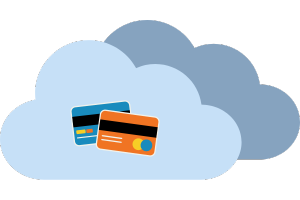Estimates suggest more than 24% of retail purchases will occur online by 2026, making the online transaction space among the ripest targets for scammers.[1]Forbes. “38 E-Commerce Statistics Of 2023” Accessed October 3, 2024.. Businesses selling products and services online must protect themselves from all types of eCommerce fraud, including friendly fraud, unauthorized transaction fraud, account takeover fraud, and more. Not paying close attention to the latest eCommerce fraud prevention tools leaves online businesses dangerously exposed to financial losses.
This guide explains everything about eCommerce fraud, best practices for detecting and protecting against eCommerce fraud, eCommerce fraud prevention tools to consider, and other related topics. Read ahead to find out how to shield your business from online scammers!
What is eCommerce Fraud?
eCommerce fraud involves deceptive practices aimed at exploiting online transactions for financial gain. Common methods include stolen credit card information, account takeovers, and phishing scams. Fraudsters exploit vulnerabilities within eCommerce payment processing, often making illegitimate purchases or siphoning sensitive data. They may employ various techniques, such as identity theft, fake account creation, or utilizing compromised credentials. Robust security measures, including encryption, two-factor authentication, and continuous monitoring, are crucial for thwarting e-commerce fraud and safeguarding customer transactions.
The 7 Types of eCommerce Fraud
Unfortunately, modern businesses must contend with many types of eCommerce fraud. Let’s explore the seven most common types of eCommerce fraud in more detail:

1. Unauthorized Transaction Fraud
Unauthorized transaction fraud occurs when someone makes purchases or financial transactions without the cardholder’s consent or knowledge. For example, if someone purchases stolen credit card details online and uses the card number to buy products from an eCommerce store. This type of fraud is challenging to catch, as a scammer doesn’t need the cardholder’s physical card to complete online purchases.
2. Friendly Fraud
Friendly fraud occurs when a cardholder disputes a legitimate transaction. In some cases, this may be a malicious attempt to gain a refund for a product they purchased. In other cases, it may be due to customers not remembering or recognizing a transaction. For this reason, it’s critical to use your trading name as your merchant account name — you don’t want confusion to result in chargebacks.

3. Account Takeover (ATO) Fraud
Account takeover (ATO) fraud involves scammers hacking into customer accounts and using saved card details or store credit. Not only does account takeover fraud cost your business and your customers money, but it may also damage your reputation. It’s critical to protect customer accounts from ATO fraud.
4. Interception Fraud
Interception fraud involves intercepting a legitimate customer’s order for fraudulent purposes. This may involve a scammer contacting a retailer and requesting to change the shipping address of a legitimate order.

5. Refund Fraud
The term “refund fraud” encapsulates a wide range of schemes designed to profit from returning products to a store. Scammers may generate fake receipts to return products for a profit — this might be possible if the scammer purchases products on sale from one store and returns them for a refund at another retailer for the standard price. Likewise, scammers may use refund fraud to return faulty products.
6. Promotion Fraud
If your business offers promotions, such as store credit or discounts for new customers, it’s ripe for abuse. Scammers may create multiple accounts to take advantage of discounts and promotions, costing your business money without yielding benefits. While this doesn’t involve stealing credit card data, it can be financially challenging for a business.

7. Triangulation Fraud
Triangulation fraud is among the most complex forms of eCommerce fraud. It’s critical to understand how it works:
- A scammer will set up an online store and list products for sale, usually on a marketplace such as eBay or Amazon.
- A legitimate buyer purchases a product from the scammer’s store.
- The scammer will use stolen credit card details to buy the product from another store and enter the legitimate customer’s shipping address.
- The scammer keeps the money from the legitimate customer who receives the product. The legitimate store loses the money when the account holder of the stolen credit card files a payment dispute.
Why Does eCommerce Fraud Happen?

To put it simply, eCommerce fraud happens because scammers profit from it. A lot of money can be made by using stolen credit card details to purchase products online. Likewise, filling false chargebacks allows individuals to keep purchased products and receive a refund at the same time. Nearly $12 billion is lost to credit card fraud annually in the United States, making it a serious profit center for those involved in online scams.[2]Statista. “Total value of losses due to card fraud, either credit card fraud or debit card fraud, worldwide from 2014 to 2022.” Accessed October 3rd, 2024.
Likewise, committing eCommerce fraud is easier than committing fraud in person. If you want to purchase a product or service in-store with a stolen credit card, you need the physical card to complete the transaction. With eCommerce fraud, scammers can purchase stolen credit card numbers and details on the dark web without needing a physical credit card. Likewise, scammers can hack into customer accounts with saved card details. Both vulnerabilities make online fraud more accessible.
Best Practices for Detecting eCommerce Fraud and Scams
Implementing best practices for detecting eCommerce fraud and scams can help your business shield itself from authenticating transactions from scammers and incurring financial losses. Check out some practices that will improve your overall eCommerce fraud protection strategy:

Install a secure payment gateway
A secure payment gateway is a top priority for any eCommerce business owner. Robust payment gateways will offer encryption and two-factor authentication (2FA), reducing the chances scammers can intercept transaction details. Your merchant service provider should be able to help you find a secure payment gateway if you’re struggling to decide which one is best.

Keep tabs on filters and controls
Many eCommerce payment platforms have fraud detection filters and controls. Many of these controls can be customized according to your needs. For example, you may decide to block all transactions originating from overseas IP addresses. Regardless of which filters and controls your business uses, keeping tabs on their performance is essential. In some cases, tight controls may block legitimate customers.

Require manual approval for high-risk transactions
Fraud detection systems can sort transactions based on risk level and require manual approval for suspicious purchases. For example, if a shipping address doesn’t match the address listed on the cardholder’s billing address. Manual approval can help your business stop the automatic approval of fraudulent purchases.

Implement a chargeback monitoring process
It can be easy to ignore chargebacks, but doing so may result in increased payment processing fees or the complete loss of your merchant account. By implementing a chargeback monitoring process, your business can catch fraud and appeal suspicious chargebacks.
4 Steps to Prevent eCommerce Fraud on Your Website
If you’re searching for a step-by-step guide on how to prevent eCommerce fraud and ensure safe online shopping on your website, check out the four steps below:

1. Partner With a Merchant Service Provider With Strong Security Protocols
First, start by partnering with a merchant services provider with a focus on security. A good merchant services provider will be able to recommend payment gateways, fraud prevention tools, best practices, and other processes to help your business avoid fraud. If you operate in a high-risk industry, using a high-risk merchant account provider with experience in your niche is extremely helpful.
2. Develop Fraud Prevention Protocols, Including Chargeback Monitoring
Let’s explore some useful protocols for preventing eCommerce fraud:
- Require Manual Approval for High-Risk Transactions: If your fraud prevention tools flag high-risk transactions, it’s best to require manual approval. This may involve calling customers to request additional information.
- Use Two-Factor Authentication (2FA): Two-factor authentication tools provide an extra layer of security by requiring the customer to receive a text or email confirmation to their listed email address or phone number. This can stop scammers from using stolen card details.
- Review all Chargebacks: Review the details of all chargebacks to ensure the payment dispute matches your set of facts. Chargeback fraud is a major source of revenue for scammers.
- Set Criteria for Chargeback Contestation: With friendly fraud and other types of chargeback fraud being rife in the eCommerce world, contesting chargebacks can be financially beneficial. Not only may it result in your business winning the chargeback dispute, but it may also deter scammers.

3. Train Staff on How to Use Fraud Prevention Tools and Processes
Once you develop protocols for preventing fraud, it’s critical to train all your staff members on your new best practices. Running training sessions to ensure all staff know how to spot and stop fraud can create consistency in your approach to shielding your business from scammers.
4. Document and Monitor All Potential Fraud
After you begin your fraud prevention strategy, it’s critical to continue monitoring and documenting all attempted fraud. If you notice trends, such as a high number of fraudulent transactions from a particular area or an increased number of chargebacks, make sure you keep tabs on it. Scammers evolve their strategies, so it’s best to stay on top of your current risks.
eCommerce Fraud Prevention Tools and Software to Consider

eCommerce fraud prevention tools and software can help stop scammers in their tracks. Check out this list of useful software products for preventing fraud:
- Kount: When customers interact with your site, Kount identifies and evaluates key customer metrics, such as IP address, location, device information, and more. It compares customer details with an extensive database to determine the transaction’s risk, helping merchants determine whether to accept a payment.
- Sift: Sift provides a range of payment protection tools to identify and block suspicious payments. Businesses can automate manual reviews to cut down on eCommerce fraud protection overhead.
- ClearSale: ClearSale uses AI and an extensive database of payment information to determine transaction risk. It helps determine if a transaction fits into three categories: decline, approve, or investigate further.
Elite eCommerce Fraud Protection with PaymentCloud
Businesses in North America suffer from 42% of the world’s eCommerce fraud, making it critical for US online retailers to neutralize threats from digital criminals.[3]Ekata by Mastercard. “Ecommerce fraud trends and statistics merchants need to know in 2024” Accessed October 3rd, 2024. Now that you understand how to reduce exposure to eCommerce fraud, it’s important to implement best practices in your own business.
At PaymentCloud, we understand the risks online businesses face. Our advanced fraud and chargeback prevention tools help our merchants stop fraud before it occurs. Opening an e-commerce merchant account with us will give you dedicated account managers tasked with helping you access the best fraud prevention tools available. We’re always ready to create a secure payment system for your eCommerce business!
FAQs
What is the most common type of eCommerce fraud?
While there are many types of eCommerce fraud, the most common scam online retailers face involves stolen credit card data. Unauthorized transaction fraud is the largest threat facing eCommerce businesses. As scammers don’t need a physical credit card to use it online, unauthorized transaction fraud is an easy target for digital criminals.
How can you control fraud in eCommerce?
Yes, while it’s impossible to prevent eCommerce fraud altogether, it’s possible to significantly reduce your exposure. By partnering with a secure payment gateway, using advanced fraud prevention tools, and monitoring chargebacks, your business can stop fraudsters from profiting. Always maintain robust fraud prevention processes to ensure your business isn’t an easy target for scammers!
What is fraud detection in eCommerce?
Fraud detection in eCommerce is the process of identifying and preventing fraudulent activities, such as unauthorized transactions or account breaches, within online retail platforms. It employs advanced algorithms and machine learning to analyze user behavior, transaction patterns, and other relevant data. Suspicious activities trigger alerts for manual review or automated blocking, ensuring a secure online shopping environment.







